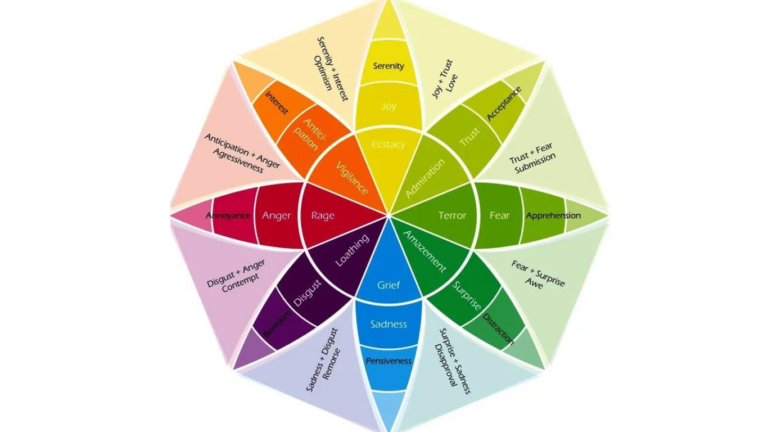Since you are reading this post, I will assume that either you or a loved one is living with tension myositis syndrome (TMS). If this is the case, I want you to understand the fear response vs. the resilient response in chronic pain.

The Fear Response
The fear response occurs when we respond to pain, stressful situations, and life in general with a fear response instead of a resilient response. We want to teach ourselves to respond with resilience instead of fear.
Chronic pain is also known as tension myositis syndrome (TMS), neuroplastic pain, or mind-body pain. When my symptoms were at their worst, I became so sensitized that I was reacting with head pain every time I took medication or smelled chemicals or perfumes.
I was able to recover from this, but shortly after my recovery, I became sick with the flu and took medications like Ibuprofen, Sudafed, and Guifenesin. My silly survival brain started causing some head pain over this.
I talked to Samantha, my pain recovery coach, about this, and she reminded me that my fear brain thinks it’s under attack; it puts its dukes up and is ready to go to battle. She mentioned that it isn’t so much what is happening; it’s our response.
Years ago, this scared me terribly. I had no idea what was going on and would panic. So when I used to freak out because my primitive brain signaled pain in response to the medications, that was a total fear response instead of a resilient response.
Why Do We Respond With Fear To Pain?
Why did I respond to the sensitivities with fear instead of resilience? Why are we so prone to responding with fear? We respond with fear for a very good reason. When we think something is dangerous, we are evolutionarily wired to respond with fear. Our brains are wired to respond to pain with fear, and this response keeps us safe.
If we twist an ankle while playing tennis, pain prevents further injury. We stop playing, ice the ankle, and elevate it. It’s dangerous to continue playing, so our brain kicks in and keeps us safe.
However, in the case of TMS, there is no injury or structural damage. If back pain is our symptom, there is nothing physically wrong that is causing the back pain. There is no danger, but our brains are signaling pain anyway.
Why is our brain doing this? Most likely, it’s because we are in a hypervigilant emotional state, such as being stuck in fight-or-flight, and then we keep the pain going because we become afraid of the pain.
Our survival brain is signaling pain because it thinks there is danger.
Why Do We Respond With Fear To Life Situations?
We now know why we respond to pain with fear and that it is entirely natural. But why do we respond to so many safe life situations with fear?
During my recovery and before I became a pain recovery coach, I was a tennis instructor. In the same coaching session with Samantha, where we discussed my response to the medications, we also talked about how I overcared and had anxiety about my tennis lessons.
I would have stressful thoughts before my lessons about wanting to be organized and do a really good job, and after my lessons, I would critique myself and think about where I fell short.
This is okay if we are doing it to improve, but I was beating myself up. I was feeling bad and anxious about my lessons, and the thing is, I rarely ever got a complaint about my teaching. I lacked confidence in my teaching, even though my instruction was fine. It was good. Teaching tennis was perfectly safe, but I interpreted it as dangerous.
Fear is a Habit
Living life through a lens of fear becomes a habit that we usually develop during childhood. We need fear to keep us safe. Fear helps us fight, run, freeze, or fawn when we are in danger. But sometimes, we are safe and feel fear because it has become a habit. Those of us with mind-body pain tend to interpret things that are safe as dangerous.
I want you to know that if fear is a habit, it’s normal, and nothing is wrong with you. It’s not your fault. It happened for a good reason and kept you safe for a long time.
However, the fear response is only needed when there is a 911 danger. We can teach our brains to respond from a place of resiliency unless there is an emergency. When we respond to TMS and safe life situations with resiliency, we heal our pain and our lives.
The Resilient Response
I responded to my sensitivities to medications with fear because I thought they were dangerous. I had the belief that the medications that I needed were hurting me. Had I known they were perfectly safe and my brain just interpreted them as dangerous, I wouldn’t have been afraid and would not have reacted strongly.
I also responded to my job with fear or anxiety. I had the catastrophic belief that I wasn’t competent enough as a tennis instructor and that people would complain and I would get fired.
What a fun way to live, right? The medications were safe, the pain my brain signaled in response to the medications was safe, and I was always one hundred percent safe teaching tennis.
How Do We Learn to Respond With Resilience Instead of Fear?
When we believe that our pain and life are dangerous when, in truth, they are safe, life doesn’t go so well. We continue to reinforce pain and limit our lives by trying to stay safe. To heal from chronic pain, we must change our interpretation of what is happening. We believe the pain is dangerous, but it is safe.
The same goes for other life situations. I believed that my job (and many other things in my life) was dangerous when, in reality, it was safe.
Teaching our brains to respond with resilience means changing our thoughts and beliefs about what is safe and what is dangerous, and this just takes time and practice.
Five Ways To Change the Fear Response to a Resilient Response
I began to change my thoughts and beliefs about the medications by getting curious and building my awareness. Understanding the pain education is the first step. TMS means no structural issue. There is nothing physically wrong, so the pain is safe.
- Become aware of your negative thoughts.
- Change your thinking or try to stop thinking.
- Have a daily meditation practice of noticing with curiosity and compassion to regulate your nervous system.
- Remind yourself that these scary symptoms are just TMS—nothing to fear.
- Give yourself safety messages.
When I developed the understanding that the medications were safe, I was able to stop panicking when I had to take them. This signaled to my brain that all was well, and my survival brain stopped signaling pain.
Build Awareness
On my way home from work, instead of judging myself, I began to notice my breath, which helped me get into a state of presence. I live in Colorado and started noticing the beautiful mountains, which made me feel grateful.
Change Your Thoughts
Changing our thoughts is the key. When we think scary thoughts, we respond to them with fear. I had to challenge my thoughts about my teaching and find the truth. I was doing a good job, and the anxiety around my job was just a habit. So, I practiced thinking positive thoughts about my teaching.
Practice and Repeat
It took me a lot of practice over time. Old habits aren’t easy to change, but with commitment, compassion, awareness, practice, and repetition, they can absolutely be changed. I built a morning practice of deep breathing and meditation, and throughout the day, I paused whatever I was doing, checked in with myself, and got myself back to the moment.
I still occasionally teach lessons and am no longer as worried about doing a good job. I’m doing my best, and I have much more fun. If clients leave, that is okay because people come and go in this life.
I don’t take things as personally as I used to and always try to have my own back. I can make mistakes, and it’s okay. It’s part of being human. I don’t do this perfectly, but that’s okay; progress is what we are looking for.
Give Yourself Messages of Safety
When I’m in fight-or-flight, it’s difficult to be natural. Things seem forced, but I teach a better lesson when I care less. It’s more natural. I’m coming from a place of resiliency and know I’m safe. The more I give myself safety messages, the more resilient I become.
Healing from TMS isn’t about the pain; it’s about your response to the pain. Living our best life isn’t about our situations but how we respond to them. Let’s learn how to respond with the truth, and the truth is that we are safe most of the time!
For more information about how to treat chronic pain, read our article 10 Steps to Treating TMS.
Click here for Pain Recovery Coaching, email us at [email protected], or fill out our contact form.
We would love to hear from you. Please leave a reply in the comment section below.





